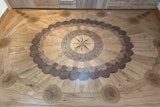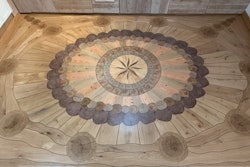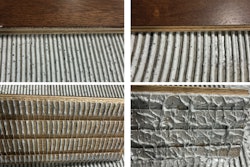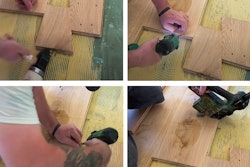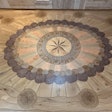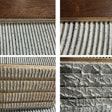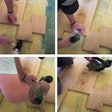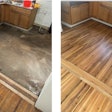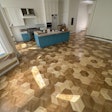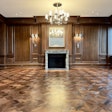End Joint Spacing
What is the distance required between end joints?
Frank Kroupa, technical advisor at the NWFA, answers:
This is a common question, especially at the NWFA schools. For years we told people a quick answer: 6 inches, if the grade allowed for it. For example, if you are installing 9- to 18-inch shorts, it's impossible to maintain 6-inch end joint spacing.
As revised in 2008, The NWFA Installation Guidelines state that spacing should be:
- 6 inches for strip flooring
- 8-10 inches for 3- to 5-inch plank
- 10 inches for plank wider than 5 inches. This is not a hard and fast rule: The guidelines state that this is a rule of thumb, not an absolute.
Common sense also comes into play, particularly in severe situations. When possible, I like to leave a distance three times the width of the board. So if I were laying 10- to 12-inch plank that had lengths from 6 to 16 feet, I would try to leave at least 3 feet between board ends.
To 'Acclimate' or Not?
Do I really have to acclimate this wood flooring before I install it?
Rick Jones, technical service manager at Houston-based Swiff-Train Company, answers:
If you're installing solid wood flooring, there is a simple answer: Yes, you do. What is "acclimation"? A common response in our industry is that acclimation is leaving wood flooring on a job site for 72 hours before you install it. However, acclimation is really getting the wood flooring in sync with the house. If the wood flooring and the subfloor are within 4 points of each other (2 for wider material) and the job site is at a normal average of where it's going to be in that region, the wood floor is already acclimated to the job. On the other hand, sometimes acclimation can take much longer. When I was installing solid wood flooring in Florida, sometimes I would have to leave the wood on the job site for weeks to get it up to 10 or 11 percent moisture content (MC), because that's the MC the wood floor would have long-term, even with the air conditioning on.
When you're talking about engineered wood flooring, acclimation is more complicated. In the past, directions for engineered flooring usually did not include acclimation, but in recent years, most engineered manufacturers changed their directions to require acclimation. It's important to follow those directions, if nothing else for this reason: If there is a problem with that floor and an inspector goes out on that job, you better be able to show documentation that you followed the instructions. I have seen many times where an inspector found out the floor wasn't acclimated and blamed everything on that, even when the lack of acclimation had nothing to do with the problem. Today there are so many inspectors who just look for any rule that got broken, and they stop right there. All of a sudden the installer is stuck with that floor, even if the failure was caused by something else.
Another note about today's engineered products: check the MC of the wood and make sure it is in a normal range of where the floor will live. Today we have many containers coming across the oceans from Asia and South America, and you have no idea what the MC of that wood may be. Also, today's products sometimes have thick sawn faces, which act differently from peeled or sliced veneers. And, always check your slab moisture before installing over concrete.
Construction Adhesive
I've been taught by my mentors and peers to use construction adhesive to glue a board replacement to the subfloor in a hardwood flooring application. Is this correct for this type of repair?
Drew Kern, Toronto-based technical consultant and certified inspector, answers:
Adhesive is adhesive, right? No! This is a common misconception. Construction adhesive is designed to bond two materials together and to hold them without any movement. Wood flooring adhesives have elasticity and are designed to flex as the hardwood expands and contracts seasonally. Never use construction adhesive to do a wood floor adhesive's job.
The proper way to conduct a board replacement is to secure it to the tongue of the adjacent board. Once the new board has been cut to size and the groove has been manipulated to fit, use a two-part epoxy to glue the groove side to the top of the tongue. This way, the underlayment can be held in place and offer protection to the board's back and the floor can freely expand and contract when necessary.
A board replacement—when completed properly—should not be noticeable and will not compromise the integrity of the hardwood floor.









